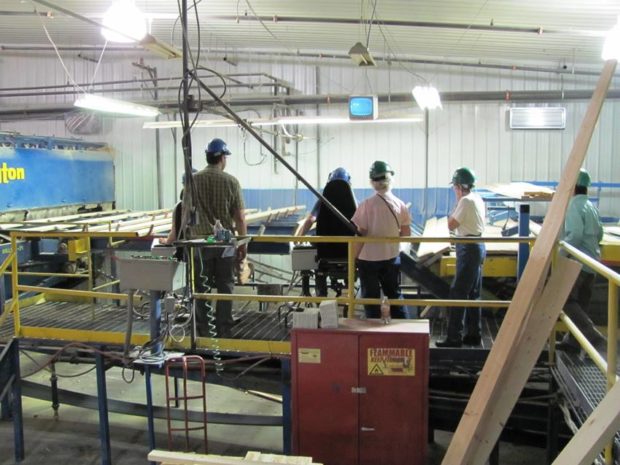
| Year | Population |
|---|---|
| 1970 | 4,178 |
| 1980 | 4,323 |
| 1990 | 4,657 |
| 2000 | 4,211 |
| 2010 | 4,213 |
| Geographic Data | |
|---|---|
| N. Latitude | 45:11:03 |
| W. Longitude | 69:12:14 |
| Maine House | District 120 |
| Maine Senate | District 4 |
| Congress | District 2 |
| Area sq. mi. | (total) 71.2 |
| Area sq. mi. | (land) 68.2 |
| Population/sq.mi. | (land) 61.8 |
County: Piscataquis
Total=land+water; Land=land only |
|
[DOE-ver-FOX-kroft] a town, the county seat of Piscataquis County, was born of the union of Dover and Foxcroft on March 1, 1922. Foxcroft was incorporated on February 29, 1812 from township T5 R7 NWP. Nearby Dover followed suit on January 19, 1822 from T3 R6 NWP. Dover served as the county seat before the towns combined.
Foxcroft Academy was established as a private secondary school on January 30, 1823, and became the first school to be chartered after Maine became a state. Named for Colonel Joseph Ellery Foxcroft who had purchased the township, it later became the name of the township itself.
Foxcroft’s economy in 1886 featured “a woollen-mill, lumber and grain mills, a door, sash and blind factory, an iron foundary, a shoddy mill, tannery, carriage-factory and several others.”
Dover at the time had a woolen mill, two flour mills, a wood pulp and pasteboard mill, and a lumber mill.
“Other manufactures at the village are carriages, boots and shoes, harnesses, pumps, trunks, tin-ware, etc.” In 1880 Dover had a population of 1,687, while Foxcroft was home to 1,264.*
From the titles below of the work by Haynes and Lewis’ Booming!, the late 19th century truly was a good economic time for the towns. But Ainsworth’s thesis (cite below) depicts the difficulties that emerged in the 20th century.
While many of the classic 19th century buildings remain downtown, the combined community of over 4,000 retains a vital village center.
Though once separated by it, the Piscataquis River now runs through the town, from Guilford in the East to Milo in the West on its way to the Penobscot River.[corrected] A dam spans the river in the midst of downtown.
The “old mill” (above right) sports a faded sign: A.W. GILMAN & CO FLOUR, GRAIN, FEED, SEEDS, LIME, CEMENT, HAY, STRAW, WHOLESALE AND RETAIL. The street side of the establishment appears below left.
Not far West of Dover-Foxcroft the historic Lowes covered bridge crosses the Piscataquis River.
With its history of older manufacturing, Dover-Foxcroft is home to Pleasant River Lumber, a family-owned modern business with four generations of experience in the forest products industry. Its highly automated mills produce over 100 million board feet of spruce dimensional lumber and eastern white pine annually, for customers throughout the East Coast.
Dover-Foxcroft is the birthplace of Lillian M. N. Stevens, (1844-1914) who helped found the Women’s Christian Temperance Union and served as its president.
Frenk Guernsey, member of Congress and the Maine State Legislature, was born in Dover in 1866. Resident and attorney James S. Wiley was a U.S. Representative in the mid 19th century. Charles E. Littlefield attended Foxcroft Academy and later, in 1899, became member of Congress.
He also served in the Maine State Legislature, and as state Attorney General. T
he town is also the birthplace in 1893 of Clarence Blethen, who played baseball for the Boston Red Sox in 1923, and the Brooklyn Robins (later Dodgers) in 1929.
For a glimpse of local issues in the mid-20th century, from the Annual Town Reports, see the Report of the County Nurse (1942) and the Town Warrant (1944).
The town lies 35 miles north of Bangor on Maine Route 15.
About five miles north of the main village on Route 153 the town hosts the 800+ acre Peaks-Kenny State Park with a white sandy beach and boat launch facilities on Sebec Lake. Campers enjoy a peaceful, family-oriented campground with 56 sites in wooded areas to promote privacy. More Info.
Form of Government: Town Meeting-Select Board-Manager.
Additional resources
Ainsworth, George E. Impact of the Closing of a Textile Mill on the Labor Force of Dover-Foxcroft, Maine. 1954. (Thesis (M.S.) in Business Administration–University of Maine, 1954)
Haynes, George H. Souvenir of Dover and Foxcroft: The Busy, Thriving, Flourishing, Up-to-date Twin Towns. Foxcroft, Me. Press of Fred D. Barrows. 1899.
*Maine. Historic Preservation Commission. Augusta, Me. Additional text and photos at National Register of Historic Places: http://pdfhost.focus.nps.gov/docs/nrhp/text/xxxxxxxx.PDF and http://pdfhost.focus.nps.gov/docs/nrhp/photos/xxxxxxxx.PDF
American Woolen Company Foxcroft Mill: https://www.nps.gov/nr/feature/weekly_features/2012/ME_12001068.pdf
Burgess Farm: 97000312.PDF
Chandler-Parsons Blacksmith Shop: 89001702.PDF
James Sullivan Wiley House: 76000111.PDF
Observer Building: 98000724.PDF
“Mission and History of Foxcroft Academy.” http://www.foxcroftacademy.org/showpage.aspx?RelId=606782 (accessed November 9, 2011)
Sawtell, William R. The Blethen House: Tale of a Survivor. Brownville, Me. W.R. Sawtell, 1984? (Printed by Printing Impressions)
Stevens, Louis E. 200 Years of Dover-Foxcroft History. Somersworth, N.H. New Hampshire Printers. c1999.
Stevens, Louis E. Booming!: Dover and Foxcroft from 1881-1892. L.E. Stevens. c1980-1996. (Newport, Me.? Newport Print Shoppe)
Stevens, Louis E. Dover-Foxcroft: A History. Somersworth, N.H. New Hampshire Printers. c1995.
*Varney, George J. A Gazetteer of the State of Maine. 1886. pp. 202-204; 235-236.
National Register of Historic Places – Listings
American Woolen Company Foxcroft Mill
After 1830, the American wool industry grew as new machinery lowered the cost of cloth manufacturing. By 1837, woolen textile production had doubled from what it had been in 1830. By 1840 nearly 60 percent of American wool production came from New England and Mid-Atlantic States. lt is within the context of this rapid growth of wool manufacturing in New England that the Mayo & Son mill was built in 1844.
The American Woolen Company Foxcroft Mill complex buildings document the evolution of building techniques, materials, and architectural styles typical of textile mills in Maine. The complex includes ten buildings and structures ranging in date from 1844 to 1941. Originally called the Mayo & Son Mill, the complex achieved its fully developed state with the construction of the shipping building under the ownership of the American Woolen Company in 1941. The American Woolen Company Mill is located on East Main Street, beside the Piscataquis River bridge, at the heart of Dover-Foxcroft, and was occupied by companies that provided employment to a significant number of local residents over a period of 160+ years.
Burgess Farm
[79 Shaw Road] With a main house and barn built in 1914 and 206 acres of largely open agricultural land, the Walter and Eva Burgess Farm is a good example of an early 20th century farmstead. The “square house” and large gambrel roofed barn were built to replace a set of 19th century buildings destroyed by fire. In 1834, William Burgess (1802-1883) bought a 100 acre lot where he established his farm. Apparently he first occupied a log cabin until he could erect a frame house. Burgess sold one-half interest in his “Homestead Farm” to his son John O. Burgess (1831-1916) in 1860, and the remainder in 1877 with the provision that he and his wife would be cared for by his son during the remainder of their life.
John Burgess continued to farm this property with his wife Betsey Ann (Merrill) Burgess until its operation was assumed by their youngest child Walter H. Burgess (1867-1964). The Burgess farm illustrates the importance of sheep to the 19th century rural economy. As the number of woolen textile mills increased, the local market for raw wool stimulated the growth of sheep herds. In Dover-Foxcroft village the first woolen mill was built in 1836, two years after Burgess purchased his farm. On the afternoon of December 23, 1913, the farm complex appears to have been completely destroyed by fire.
The new buildings built by the Burgesses in 1914 reflected both the popular fashion in farmhouse architecture as well as modern ideas about barn design. The house fully illustrates the characteristics of the “square house” or “foursquare” with its nearly square footprint, two-story height, hip roof with a dormer on the front elevation. The immense gambrel roofed barn represents a design that emerged at in the early 20th century, its chief benefit was the increased hay storage in the upper level.
In Maine, such barns are relatively scarce since few farmers could justify the expense of replacing their 19th century barns at a time when agriculture was in steep decline.*
Chandler–Parsons Blacksmith Shop
[Dawes Road] The Blacksmith Shop likely was built in the early 1860s. Within this modest wood shingled building is a complement of original tools and mechanical devices used in a once common small-scale 19th century industrial enterprise.
The blacksmith shop was apparently built by Nicholas A. Chandler for use in his horse breeding business for an undetermined period.
Apparently the shop came into the possession of Chandler’s sister Cynthia Chandler Parsons whose husband, Henry L. Parsons, was a blacksmith. Parsons was listed as a blacksmith in the 1869 Maine Business Directory. In 1883 he was listed as the agent of the Cooperative Blacksmithing Company, a local organization that filed annual returns of stockholders (including Parsons) between 1882-87. Parsons is thought to have practiced his trade in the building until 1905. For about the next sixty years it was occasionally used by residents of the neighborhood for their smithing needs and storage. In 1964 it came into the possession of the Dover-Foxcroft Historical Society.* [Kirk F. Mohney photos, 1989]
Commercial Historic District
The Commercial Historic District in the town of Dover-Foxcroft, developedloped between the town’s two woolen mills over many decades. The district has been a primary center for the community. As the county seat for Piscataquis County and the town with the largest population in the county, Dover-Foxcroft has been the county’s service and retail center since the nineteenth century. Because the portion of East Main Street within the district boundaries connects the various roads that come into town from the surrounding communities, this portion of downtown can be considered the “crossroads” of the county and its most significant commercial center. The District is also significant for its architecture. The 19 buildings comprise a visually cohesive grouping of commercial, institutional, and mixed-use commercial and residential buildings built between 1836 and 2020 which collectively retain a high degree of historic integrity. The district has many of buildings express the distinct characteristics of nineteenth and twentieth century types, periods and methods of construction used in rural Maine communities. The three buildings for which architects have been identified demonstrate the influence of the Greek Revival, Romanesque Revival, Italianate, early Twentieth Century Commercial, and Art Deco styles. Character defining features of the district include many buildings built to the lot lines, common setbacks, commercial storefronts on nearly all of the buildings, predominantly wood-frame construction, false fronts, and flat roofs on many of the buildings.
Observer Building
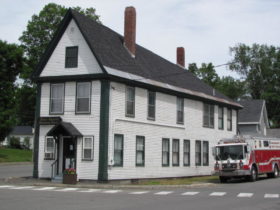 [126 Union Square] Constructed in 1854 for William Sargent as a tenement, the Observer Building is one of only a very small number of so-called “flat iron” buildings in Maine. It is capped by a gable roof whose variable roof slope gives it a curved appearance like that of the hull of a ship. It was in long time use housing the offices and printing press of The Piscataquis Observer.
[126 Union Square] Constructed in 1854 for William Sargent as a tenement, the Observer Building is one of only a very small number of so-called “flat iron” buildings in Maine. It is capped by a gable roof whose variable roof slope gives it a curved appearance like that of the hull of a ship. It was in long time use housing the offices and printing press of The Piscataquis Observer.
In 1903 the owner remodeled the first floor and then leased the space to the Observer Publishing Company, printers of the weekly newspaper The Piscataquis Observer. The company acquired the building in 1917 and continued to publish the newspaper from this location until 1996. On July 14, 1997, Northeast Publishing Company, which had acquired the Observer Publishing Company, gave the building to the Dover-Foxcroft Historical Society.* (See the D-F Historical Society building above.]
Wiley, James Sullivan, House
[Main Street] James Sullivan Wiley, who built this Greek Revival temple style house in 1849, was born in Mercer in 1808 and spent his boyhood in Fryeburg. In 1826 he was apprenticed to a blacksmith in Bethel while attending Gould Academy. In 1829 he walked to Bangor, some 133 miles, where he acquired further education and taught school in Brewer.
He graduated with honors in 1836 from Waterville (now Colby) College and became principal of Foxcroft Academy, a position he held for three years. He read law with a local attorney and, upon admission to the Bar, established a practice in Dover. In 1846, after a sharply contested vote, he received the Democratic nomination for the congressional district composed of Penobscot and Piscataquis Counties. He was elected and served one term in the Thirtieth Congress. He then returned to Dover in 1849 and built the beautiful residence on Main Street where he remained until 1889. He spent the next two years in Fryeburg where he died in 1891.* [See Wiley Greek Revival house photo above.]


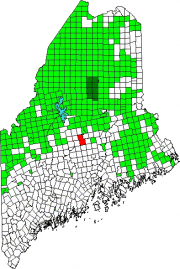

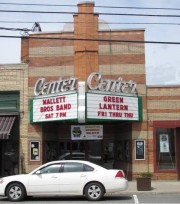
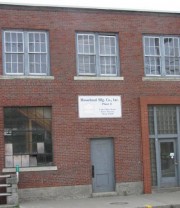

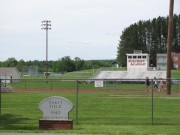

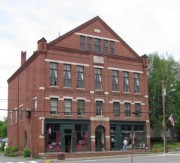
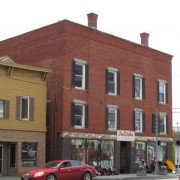
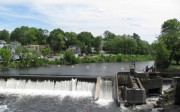
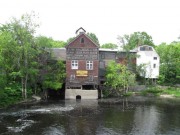
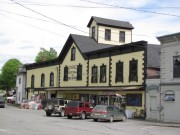
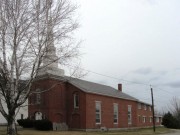
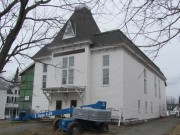
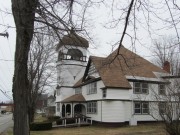
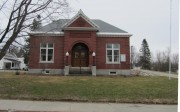
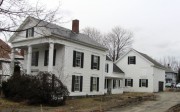
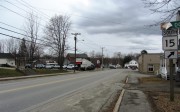

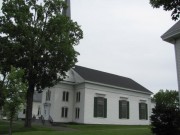
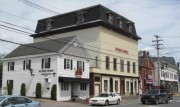
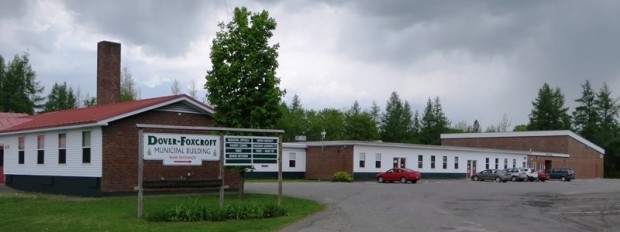
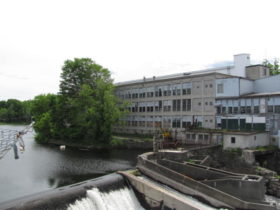
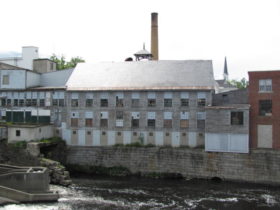
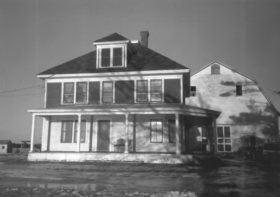
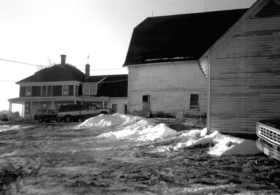

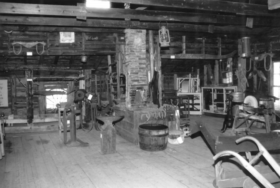
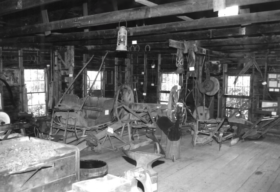
Piscataquis River now runs through the town, from Guilford in the east to Milo in the west on its way to th
Should read from Guilford in the west to Milo in the east
Thanks for the geography lesson!